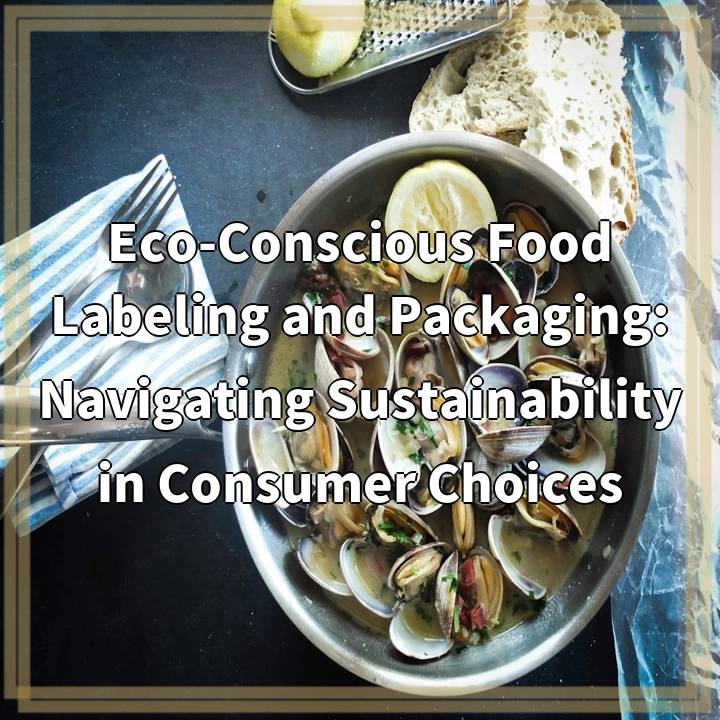Physical Address
304 North Cardinal St.
Dorchester Center, MA 02124
Physical Address
304 North Cardinal St.
Dorchester Center, MA 02124

Eco-conscious food labeling and packaging practices aim to reduce the environmental impact of food products through transparent labeling and sustainable packaging solutions. By prioritizing the health of the planet and consumers, these practices provide essential information about the ecological footprint of food items, including sourcing methods, ingredient integrity, and packaging materials.
Eco-conscious labels play a crucial role in empowering consumers to make informed choices aligned with their values. These labels indicate whether products are organic, non-GMO, fair trade, or made from sustainably sourced ingredients. Additionally, packaging solutions focus on minimizing waste, utilizing recyclable or biodegradable materials, and reducing the use of plastics.
Despite the growing emphasis on eco-conscious food labeling and packaging, several challenges persist in the real world, complicating the effectiveness of these initiatives.
One prominent issue is greenwashing, where companies exaggerate or misrepresent their environmental practices to appeal to eco-minded consumers. This can create confusion and skepticism among shoppers, making it difficult for them to discern genuinely sustainable products from those that merely use misleading labels to enhance their brand image.
Another significant problem is the lack of standardized regulations and certifications across the industry. Without a unified set of criteria for eco-conscious labeling, companies may label their products inconsistently, leading to consumer mistrust. Discrepancies can make it challenging for consumers to understand the actual sustainability of the products they purchase.
The cost associated with eco-friendly packaging materials and processes can pose a barrier for smaller producers and manufacturers. In many cases, sustainable alternatives are more expensive to produce, resulting in higher prices for consumers. This disparity can limit the accessibility of eco-conscious options, particularly in lower-income communities where budget constraints influence purchasing decisions.
Moreover, consumer awareness and education play a crucial role in the success of eco-conscious food labeling. Many consumers may still be unaware of the meanings behind various labels or the importance of sustainable practices. Without adequate information, they may struggle to make informed choices, undermining the efforts of brands committed to eco-consciousness.
To address the challenges associated with eco-conscious food labeling and packaging, several solutions can be implemented to create a more effective and trustworthy system that encourages sustainable consumer choices.
Creating standardized regulations and certifications for eco-conscious labeling can help build trust in the marketplace. Regulatory bodies should collaborate with industry leaders to develop clear guidelines that define what qualifies as environmentally friendly, ensuring consistent use of terminology and standards across products. This can eliminate confusion and provide consumers with reliable information.
To combat greenwashing, transparency must be prioritized. Companies should provide detailed information about their sourcing, production processes, and sustainability claims. Third-party audits and certifications can help verify claims, offering consumers assurance that products are truly eco-friendly. Educational initiatives that inform consumers about greenwashing tactics can also empower them to make better purchasing decisions.
Creating incentives for smaller producers to adopt eco-friendly packaging can help reduce costs. Grants, subsidies, or cooperative buying initiatives can encourage the shift toward sustainable practices, making eco-conscious options more affordable. Additionally, public awareness campaigns can promote the importance of supporting local and sustainable businesses, boosting their visibility in the marketplace.
Consumer education is essential for the success of eco-conscious labeling. Brands can invest in informative marketing campaigns that explain the benefits of sustainable products and how to interpret eco-labels. Workshops, community events, and online resources can also help educate consumers about environmental issues and the impact of their choices, enabling them to make more informed decisions.
By implementing these solutions, stakeholders can work together to establish a more transparent, reliable, and sustainable food ecosystem that empowers consumers and supports eco-friendly practices.
If you’re wondering where the article came from!
#